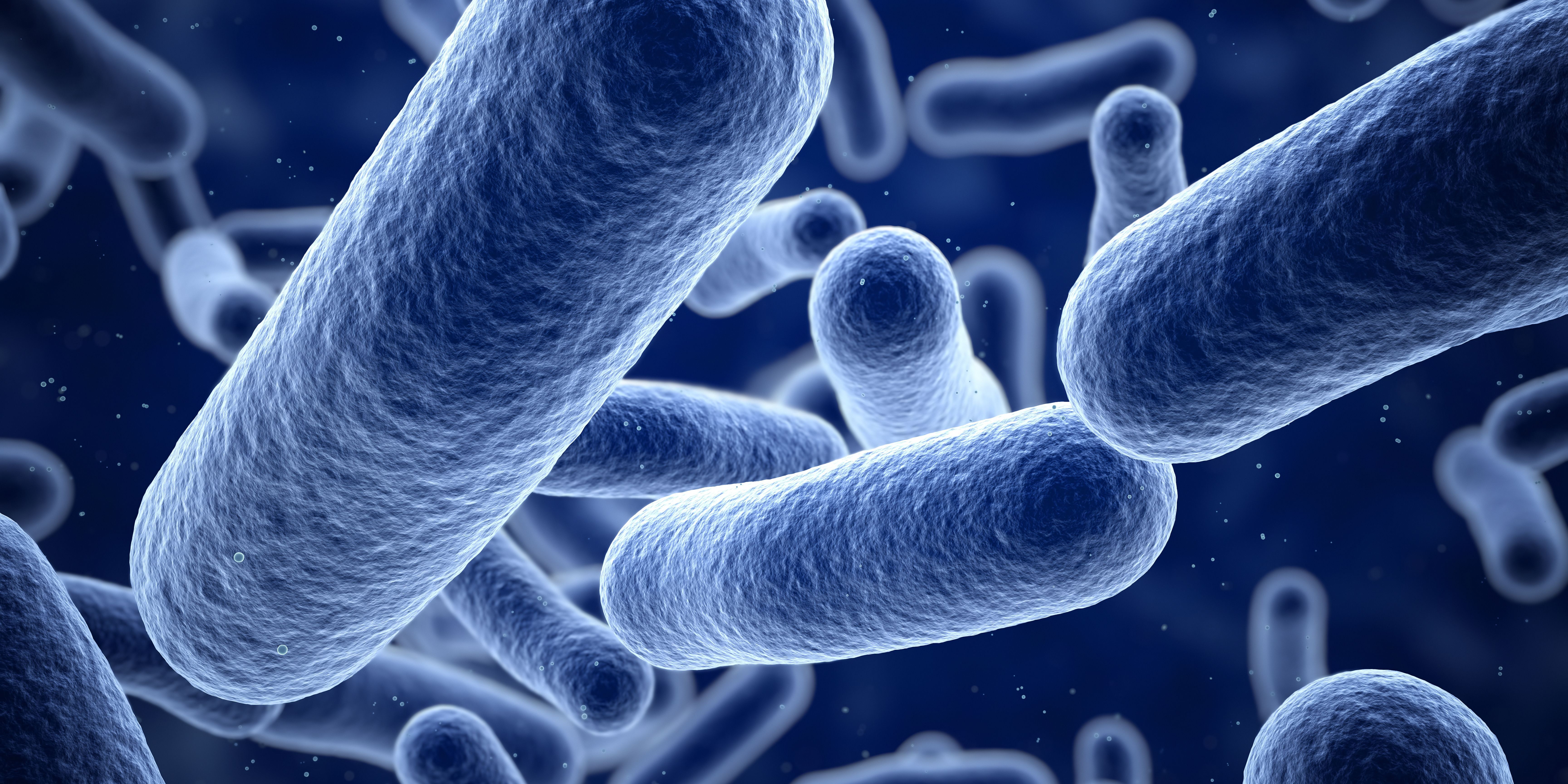Written by Alisa - 6 Minutes reading time
Bugs as drugs to boost cancer therapy

In the 1890s, physician William Coley injected patients who had cancer with bacteria after learning about patients who experienced spontaneous tumor regression following a concurrent bacterial infection.1 He was one of the first scientists to link immune system activation with an antitumor response, which earned him the appellation, “the father of immunotherapy.” Despite some successes in the clinic, safety concerns and the rise of radiotherapy caused these bacterial elixirs, known as Coley’s toxins, to fall by the wayside.
Over the last few decades, advancements across immunology, microbiology, and synthetic biology renewed interest in bioengineering bugs for cancer therapies.2 In a paper published in Science, researchers designed probiotics to colonise tumors and guide engineered T cells to the cancer site.3 Their novel platform not only shows that engineered bacteria can help existing immunotherapies gain access to difficult-to-treat solid tumors, but also highlights the broader potential of living drugs.
Synthetic solutions for solid tumors
The tumor microenvironment is an inhospitable ecosystem. “For bacteria, they kind of don't care about all of that. They are really, at a very general level, looking for a place where they can survive in the body that's away from the immune system,” said Tal Danino, a synthetic biologist at Columbia University and author of the study.The hypoxic, minimally surveilled core of a solid tumor is the perfect bacterial bungalow. However, some bacterial strains can still inhabit healthy organs, so researchers need to explore ways to modify the bacterial genome to reduce virulence and toxicity. Although attenuated bacteria proved safer in both mice and humans, researchers observed poor tumor colonisation and no tumor regression.4,5 Now, to improve tumor targeting and specificity, researchers are searching for synthetic biology solutions.
For their Trojan horse, the researchers engineered the probiotic strain Escherichia coli Nissle 1917, which was equipped with Danino’s quorum sensing lysis circuit. Once the bacteria reached quorum, they released synthetic antigens that stuck to the tumor. Specifically, the researchers fused a green fluorescent protein (GFP) to the heparin binding domain (HBD) of a placental growth factor protein.10 The sticky HBD anchored to collagens and polysaccharides, ubiquitous components in the tumor environment, thus planting GFP flags on the tumor. Although these molecules are found in healthy tissue, they are highly abundant in the tumor. “We’re entirely relying on the bacteria being specific for these tumors,” Vincent noted.
Most Food and Drug Administration (FDA) approved CAR T cell therapies target the tumor antigen cluster of differentiation 19 (CD19), but Vincent designed her CAR to target their synthetic GFP antigen. “We're painting the tumors green, and the T cells recognise green,” said Vincent. “The beauty of the CAR is that they're modular, so you can just swap the antigen binding domain with anything, really,” said Vincent.
When they tested their probiotic CAR system in vitro using different human cancer cell lines, the researchers observed increased specificity and cytotoxicity relative to systems lacking either the GFP tag or receptor. Following the in vitro inspections, their system was ready to leave the garage and hit the road.
Taking the probiotic CAR model out for a spin
For the first in vivo test of their probiotic CAR platform, the researchers turned to immunodeficient mice bearing subcutaneous tumors derived from human cancer cells. After injecting the engineered bacteria directly into the tumor, they waited 48 hours to allow for quorum-regulated release of the GFP tags before similarly delivering the engineered CAR.11 The engineered probiotic CAR system inhibited tumor growth, and subsequent flow cytometry analyses of the tumors provided evidence of increased T cell activation.
The researchers also found that a partial system produced a partial response: empty bacteria administered alongside the engineered CAR still triggered some T cell activation at the tumor site. “My favorite part of the system is the fact that the T cells respond really strongly to bacteria,” said Vincent. “[This] puts them as this really desirable partner organism. They can release payloads, yes, but they're also naturally stimulatory so they're making a colder tumor hotter.”
To increase CAR T cell proliferation and persistence, patients must first undergo lymphodepletion to kill circulating T cells.12 However, a long-term goal of immunotherapies is to administer the treatment to an intact immune system. “We’re going to need help from the endogenous immune system rather than relying on one antigen to clear the whole tumor,” said Vincent.
To test their system on a functioning immune system, Vincent and her colleagues implanted mouse-derived tumors on both hind flanks of immune-competent mice and then administered the engineered bacteria directly to one of the tumor sites, followed a few days later by two rounds of CAR T treatment. (They introduced an extra dose of CAR T cells to combat T cell exhaustion.) The researchers hoped that their system could generate enough inflammation to stimulate the host immune system to recognise the additional tumor, so they were excited to find a reduction in tumor growth in not only the treated tumor but also the untreated site.
The subcutaneous experiments prepared for the big experiment: intravenous administration of the probiotic CAR system. For this, they implanted human cancer cells into the mammary fat pads of mice with weakened immune systems and then administered the probiotic CAR regimen with one small tweak to the system. In order to further coax the CAR T cells to the tumor site, the researchers engineered the bacteria to corelease the immune cell attractant human chemokine ligand 16 (CXCL16).13 This paved a concentration gradient for the CAR T cells to drive along towards the tumor. The added chemokine cargo added a boost to the system, outperforming the standard probiotic CAR regimen with respect to tumor growth inhibition. Additionally, analyses of other organs showed that bacteria and GFP expression was restricted to the tumor site.
Before transitioning these experiments to humans, the researchers will first need to genetically attenuate their engineered bacteria. In this study, they used a wild type strain of E coli, but mice are less sensitive than humans to Gram-negative bacteria toxicity.14 “The major focus of the lab now is trying to make a translational strain of bacteria,” said Vincent.
A synthetic space for the growth of bacterial therapies
“This is an example of how two different engineered systems can be complementary and synergise their function,” said Hernández-López. “[Danino] has been developing the circuit to lyse bacteria for many years and it's great to see it now in combination with other approaches.”
When Danino sees bacteria, he sees a versatile platform that can deliver therapeutics to tumors but also interact with other modalities. Beyond remodeling the tumor environment to boost CAR T efficacy, researchers are exploring how engineered bacteria can enhance positron emission tomography (PET)/magnetic resonance imaging (MRI), focus ultrasounds, and even deliver drug-loaded nanoparticles.15 “What we're really excited about is building a platform that other people could use to deliver their payloads or interact with other kinds of cancer modalities that they're developing,” said Danino.
“The microbiome engineering field is slowly converging towards meeting the engineered T cell field, and it's going to be exciting to see what comes next,” said Hernández-López.
Interested in the dynamic Biotechnology Industry? Let our experts guide your career. Explore how we can help you today! Discover the possibilities here.
Also published on Thescientist.com
Want to stay informed about current Life Science and recruitment news on a regular base? Then register here for free.
